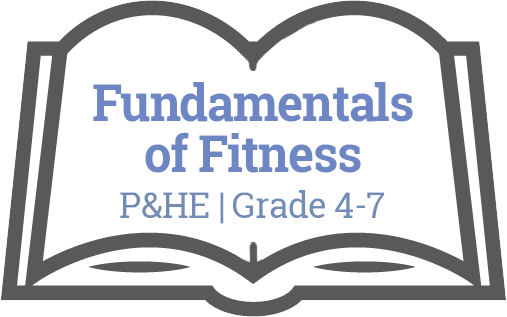
Unit Plan: Fundamentals of Athletics and Fitness
Physical & Health Education / Grade 4-7

Big Ideas
Daily physical activity enables us to practice skillful movement and helps us develop personal fitness.
Concepts:
- Fitness
- Movement
Essential Questions
Students will keep considering…
- What does it mean to be fit?
Evaluative Criteria
Teacher Evaluative Criteria:
> Fitness Log, with reflections before, during, and after exercise
> Fitness Log, with chart filled out accurately
> Movement rubric
> Communication rubric
Monitoring Progress
Teacher will monitor progress:
N/A
Potential Student Misunderstandings:
N/A
Resources
Reflection
How will teachers and their students reflect on and evaluate the completed project?
Teacher:
Next time I teach this unit I would…
Student:
My students needed:
Process:
Product:
Content:
Downloads
Stage 1 – Desired Results
Big Ideas
Daily physical activity enables us to practice skillful movement and helps us develop personal fitness.
Concepts:
- Fitness
- Movement
Transfer Goals
Students will be able to independently use their learning to…
- Participate daily in movement promotes fitness
- Enhance enjoyment of activities
Meaning
Students will understand that…
- Improving our personal fitness can have a direct impact on athletic performance, as well as overall health.
Students will keep considering…
- What does it mean to be fit?
Acquisition
Students will be skilled at…
- Developing and applying a variety of fundamental movement skills in a variety of physical activities and environments
- Developing and applying a variety of movement concepts and strategies in different physical activities
- Identifying, applying and reflecting on strategies used to pursue personal healthy-living goals
- Describe and assess strategies for promoting mental well-being
CONTENT
Students will know that…
GRADE 4
- Proper technique for fundamental movement skills, including non-locomotor. locomotor, and manipulative skills
- Movement concepts and strategies
- Ways to monitor physical exertion levels
- How to participate in different types of physical activities, including individual and dual activities, rhythmic activities, and games
- Benefits of physical activity and exercise
GRADE 5
Grade 4 content, plus:
- Differences between the health components of fitness
- Training principles to enhance personal fitness levels, including the FITT principle
GRADE 6:
Grade 5 content, plus the SAID principle
GRADE 7:
Grade 6 content, plus:
- Training principles to enhance personal fitness levels, including the FITT principle, SAID principle, and specificity
- Effects of different types of physical activity on the body
Which Core Competencies will be integrated into the unit?
Communication: Using appropriate listening and observation strategies to help form clear feedback that is given to another peer; using various methods of communicating progress (charts, graphs, reflections, etc.)
Critical and Creative Thinking: Consideration of the principles of fitness (FITT, SAID) and how they apply to individual contexts (self and others).
Personal and Social: Developing an understanding that individuals do not have equal amounts of each component of fitness or health; considering the factors that will impact an individual’s ability to become fitter or more healthy
First People's Principles of Learning

The following resources are made available through the British Columbia Ministry of Education. For more information, please visit BC’s New Curriculum.
Big Ideas
The Big Ideas consist of generalizations and principles and the key concepts important in an area of learning. The Big Ideas represent what students will understand at the completion of the curriculum for their grade. They are intended to endure beyond a single grade and contribute to future understanding.
Core Competencies
 Communications Competency
Communications Competency
The set of abilities that students use to impart and exchange information, experiences and ideas, to explore the world around them, and to understand and effectively engage in the use of digital media
 Thinking Competency
Thinking Competency
The knowledge, skills and processes we associate with intellectual development
 Social Competency
Social Competency
The set of abilities that relate to students’ identity in the world, both as individuals and as members of their community and society
Curricular Competencies & Content
Curricular Competencies are the skills, strategies, and processes that students develop over time. They reflect the “Do” in the Know-Do-Understand model of curriculum. The Curricular Competencies are built on the thinking, communicating, and personal and social competencies relevant to disciplines that make up an area of learning.
Additional Resources
First People's Principles of Learning
To read more about First People’s Principles of Learning, please click here.
For classroom resources, please visit the First Nations Education Steering Committee.
